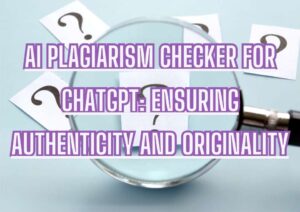Get around AI detection
There is growing concern regarding students using ChatGPT and similar AI tools to complete their schoolwork automatically. However, it is crucial to emphasize that academic dishonesty and cheating are not encouraged.
It has come to light that there are tools capable of detecting AI-generated text, and it is highly probable that teachers and professors will incorporate them to scrutinize student work in the future. Here we will discuss how to get past AI detectors:
(Note this article is for education purposes only)
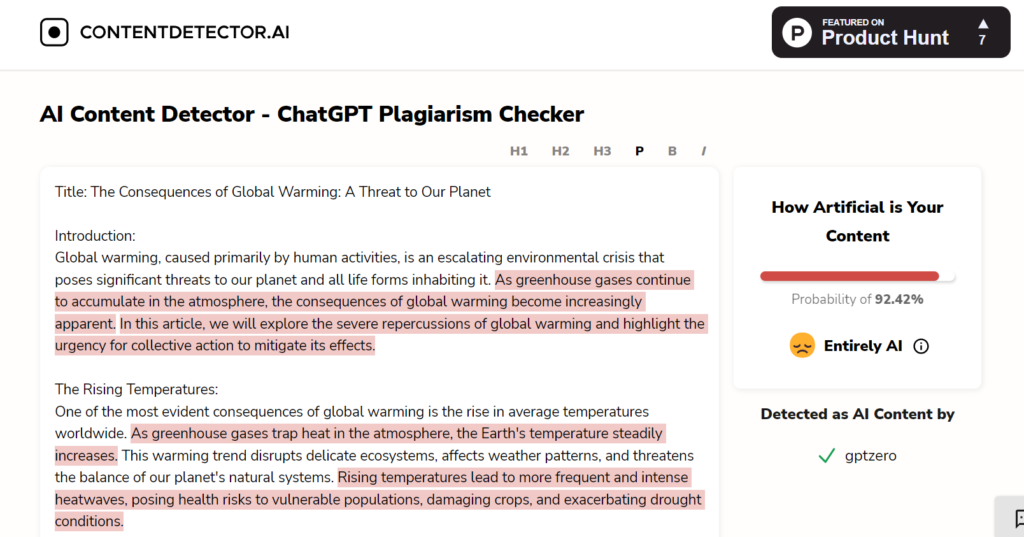
AI Detection Methods
Understanding how AI content is detected requires us to understand how these tools operate and evolve.
How AI Detection Tools Work
AI detection tools rely on sophisticated algorithms and machine learning models to analyze and compare submitted content with vast databases of existing texts. The tools assess similarities and patterns to identify potential instances of AI-generated content.
Text Comparison Algorithm: AI detectors use text comparison algorithms to compare the submitted content with a wide range of sources. These algorithms look for textual overlaps, sentence structures, and even unique phrases or idioms to flag potential matches.
Machine Learning Models: Many AI detection tools employ machine learning models that learn from large datasets to recognize patterns associated with AI-generated content. As they encounter more examples, these models become more adept at detecting AI-generated text.
Patterns and Red Flags in AI Content
Patterns and Red Flags in AI Content
AI detection tools are designed to spot specific patterns and indicators that suggest content may be generated by AI. These red flags include:
Consistent Language Usage: AI-generated content may exhibit a consistent style or vocabulary that differs from the typical variations found in human writing.
Uncommon Phrases or Vocabulary: Some AI models may use uncommon or technical phrases that are atypical of human expression.
Over-Reliance on Source: AI-generated content may rely heavily on specific sources or mimic existing texts excessively.
Unnatural Sentence Structure: AI models may produce sentences that are grammatically correct but lack the subtle nuances and natural flow of human writing.
How to Bypass AI Detection
There are numerous ways to get past ai detector. We have tried all of them and here is the list of that works.
Use of AI Detection & Removal Tools
There are a number of tools available that can help you to bypass AI content detectors. One such tool is undetectable.ai or Originality.ai. These AI detection tools work by rewriting AI-generated content so that it looks like it was written by a human using there AI Language Models.
The issue is that most of them are paid. Those which are free do a really bad job in bypassing AI detection tools. Its better to use other methods.
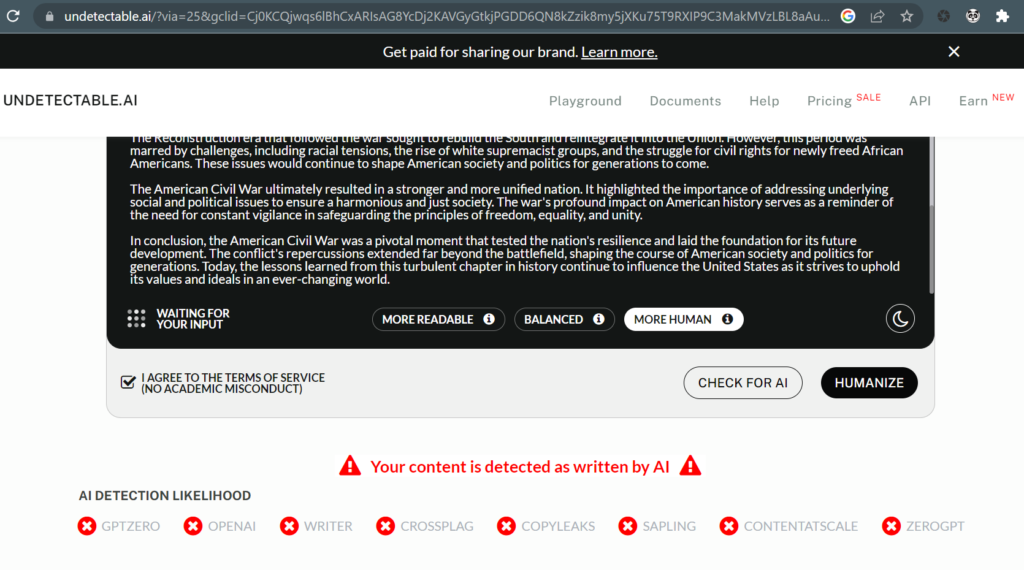
Use Paraphrasing Tools To Avoid AI Detection
It turns out that this is a relatively easy method to bypass AI detection Use tools like quillbot https://quillbot.com/ . It lets you paraphrase text, and doesn’t even require an account (but there is limit to word count). The trick is to run your essay through it multiple times; after 4-5 paraphrases, all of ChatGPT’s words have been changed completely beyond recognition.
After doing tis we received a “98.97% chance of being “real”. However, the essay was clearly a lot worse: all of ChatGPT’s clean writing is gone, having been turned into a heap of synonyms and awkward rephrasing. Essentially, we’ve gone from a solid B to barely scraping by with a C.
How can I avoid AI detection for free?
Here we will be sharing Legit methods for bypassing AI detection tools
Introducing Natural Language Variation
one great strategy is to introduce intentional variations in the language used within the content. By diversifying the writing style, vocabulary, and overall structure, AI-generated text can appear less predictable and much closer to human writing. This approach bypasses the AI detection algorithms that rely on identifying specific patterns associated with AI content.
Utilizing Diverse Writing Styles and Vocabulary To achieve natural language variation, experiment with different writing styles. Consider adopting formal, informal, conversational, or technical language depending on the context. Try to use different style for each paragraph in your paper.
Incorporating Sentence Structure Variations Human writing naturally exhibits diverse sentence structures, including simple, compound, complex, and compound-complex sentences. By strategically integrating various sentence types, the AI-generated content gains a sense of authenticity, making it less susceptible to detection.
Avoiding Consistent Patterns or Repetitions AI detection tools often identify repetitive patterns or consistent phrasing that are indicative of machine-generated content. To avoid detection, ensure that the AI-generated content does not rely on repetitive word usage or phrasing. Introduce subtle variations manually in the sentence length and paragraph structure to create a more natural flow.
Make Your Content Imperfection
Human writing has minor errors, grammatical mistakes, and inconsistencies. Intentionally introducing imperfections into the AI-generated content can make it appear more human-like, thereby increasing the likelihood of evading detection.
Add Intentional Errors and Inconsistencies Incorporate minor spelling errors, grammatical mistakes, or typographical errors sparingly throughout the content. These subtle imperfections, when strategically placed, can create an illusion of human error and enhance the content’s authenticity.
Mimicking the Nuances of Human Writing Human writers may sometimes contradict themselves or provide varying opinions on a subject. You can have multiple opinion for a single argument. Use this aspect of human writing by introducing slight contradictions or diverse perspectives within the AI-generated content.
Avoid Overdoing the above While introducing imperfections is crucial, maintaining overall coherence in the content remains essential. Strike a balance between imperfection and clarity to ensure the AI-generated text remains readable and you don’t get a C instead of an A.
Use Complex Prompts
A well-tailored prompt is a key to generating diverse and authentic AI content. By training AI models with a wide range of sources and customized prompts, the output can exhibit greater variation, making it more challenging for detection tools to pinpoint.
Train AI with Diverse Sources Instead of a simple prompt add diverse set of texts, including articles, books, blogs, and academic papers and tell AI to analyze it. You can also train AI for a certain writing style. Add a sample of your preferred writing style before adding In your prompt. The generated content will then show a broader spectrum of human-like expression.
Add Customized Prompts Instead of relying on generic prompts, create customized prompts tailored to specific subjects and writing requirements. Custom prompts can lead the AI to generate content with a unique perspective, reducing the likelihood of detection.
Give Context for Authentic Output To achieve content that resonates with readers, provide contextual information or background details within the prompt. This context allows the AI to craft content that aligns more closely with the desired theme and tone.
You can simple do that by adding in a prompt “Act as a college student who is fluent/mediocre in English”
Here is an Example Topic is Global Warming
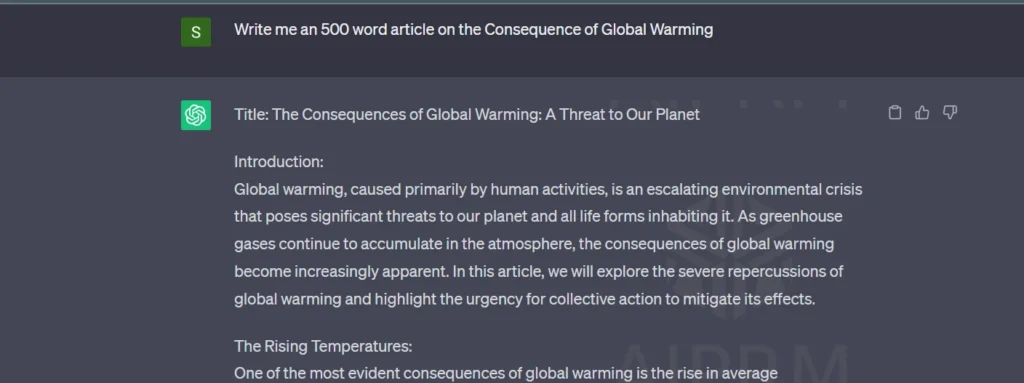
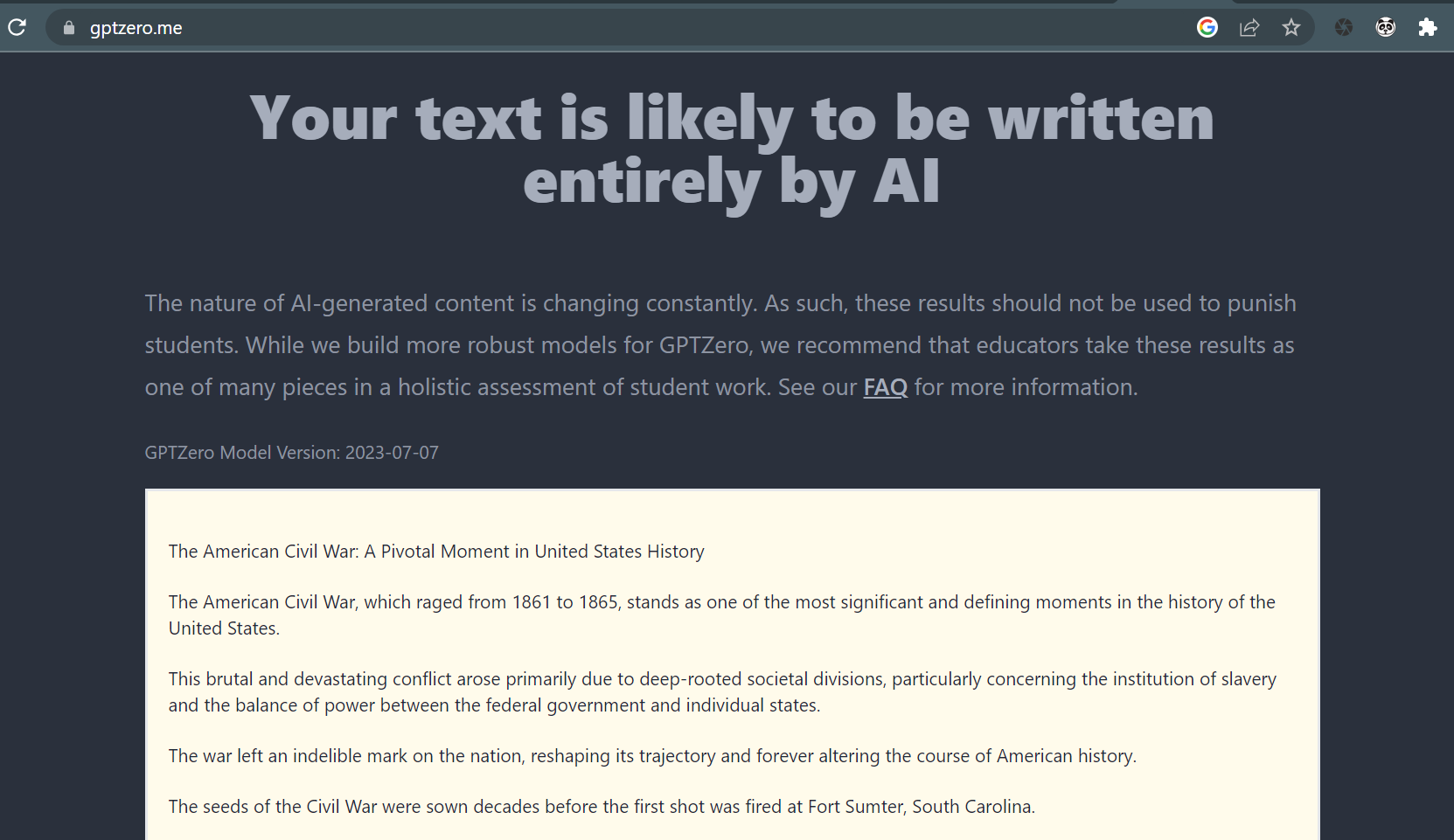
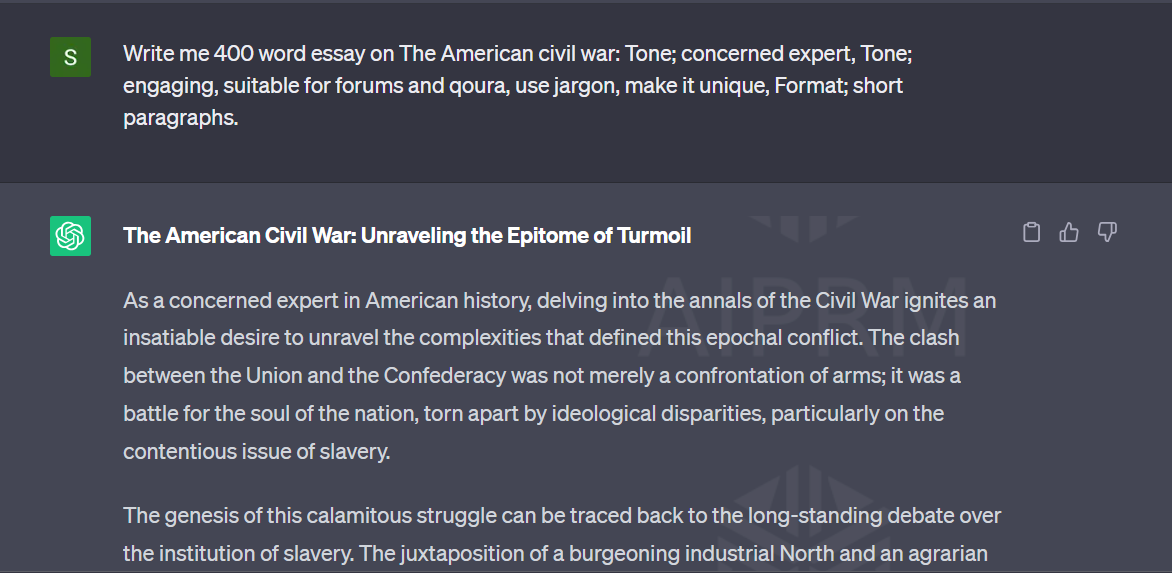
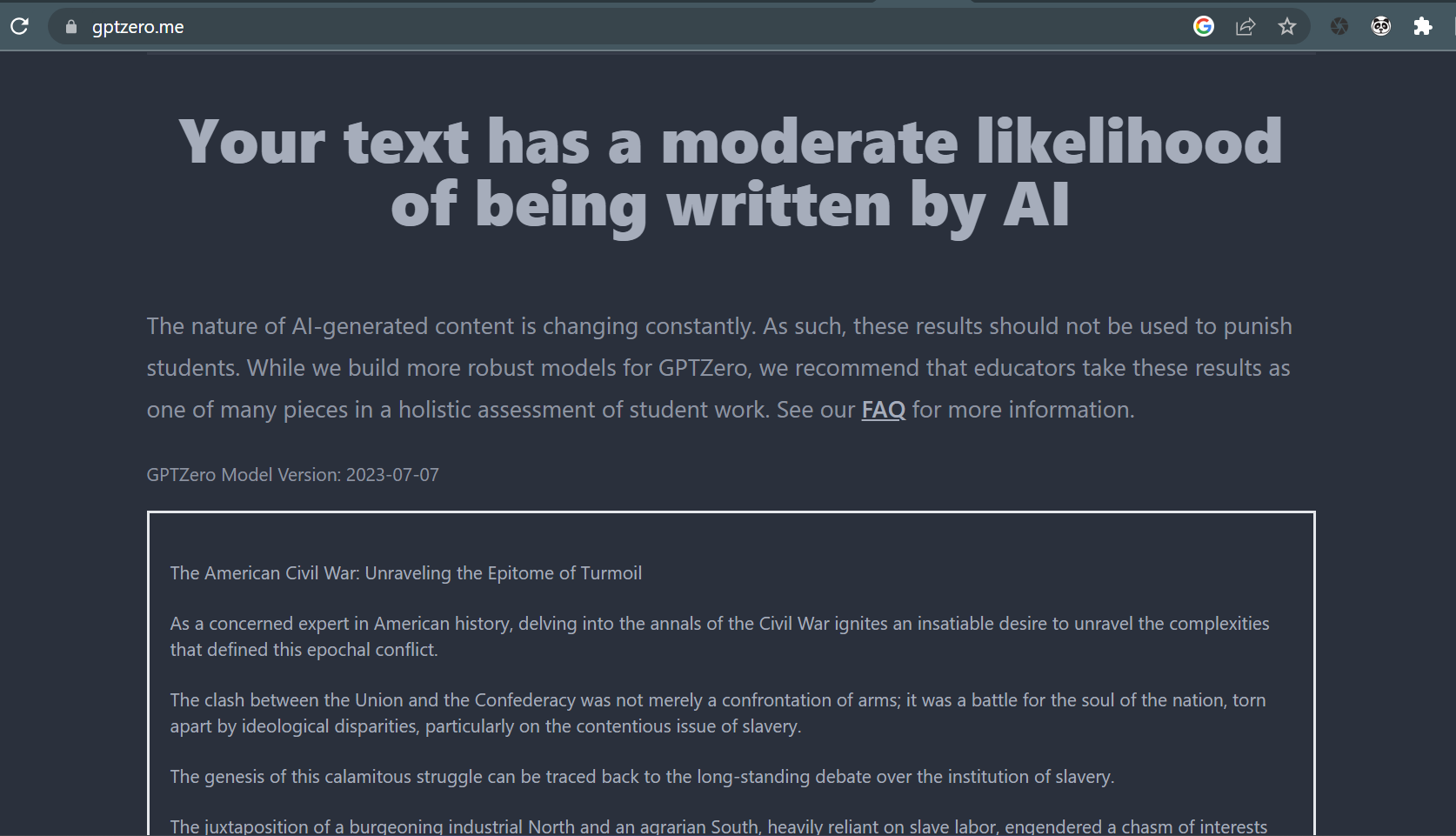
A small twist in the Prompt has created a different result. If the Prompt is made even more complex and other methods are augmented the result can be even better.
Use Advanced AI Models
As AI technology evolves, newer models may offer enhanced capabilities, making it increasingly difficult for detection algorithms to flag AI-generated content. Leading AI research institutions and organizations often release updates and newer versions of AI models that offer improved performance and authenticity.
Select AI models that demonstrate a wide range of language abilities and linguistic understanding. Models that can adapt to different writing styles and contexts can provide more diverse and human-like output.
Add Human Touch
To achieve content that is truly compelling and undetectable, it is essential to add a your own personal human touch to the AI-generated output.
Balance AI with Personal Input Use AI-generated content as a starting point or reference, but infuse the content with your original analysis and understanding. Blend the AI output with your unique perspective to create a comprehensive and thoughtful piece.
A really good way of doing this is giving the outline for the paper yourself.
Add Relevant Facts and Figures AI models usually don’t have access to the most current data, so it is essential to verify and update the content with the latest facts, statistics, and developments. Furthermore, the data might not be that much relevant to you.
Unique Insights and Perspectives Bring your expertise and individual perspective to the AI-generated content. By adding unique insights, personal experiences, and thoughtful commentary, the content gains a depth that is challenging for detection tools to replicate.
Translate to bypass AI Detection
Another way you can bypass the AI detection if you speak more than one language. Just ask ChatGPT to write the paper in another language (Spanish in my case), and then translate it yourself. You can also give it to google translate to translate it. It might not be the most coherent paper but it will surely pass AI.
Few Additional Methods to Get Past AI Detection
- Use AI to identify key phrases or concepts in the text created and rephrase them.
- Translate AI generated text in another language then back
- Instruct AI to change the sentence structure of the text while keeping the meaning intact.
- Tell AI to replace certain words in the text with synonyms to create a more varied and nuanced version.
- Use AI to rephrase text by replacing certain words with antonyms to create a different perspective or tone.
- Use AI to automatically generate a summary of the text and then rephrase ad expand it in a different way.
- Use AI to generate a new text from the original text by using a different perspective or point of view.
- Use AI to generate text that is more persuasive or compelling than the original text.
- Use AI to generate text that is more appropriate for a specific cultural or demographic group than the original text.
Tweak Around a little bit and you will get some really good output.
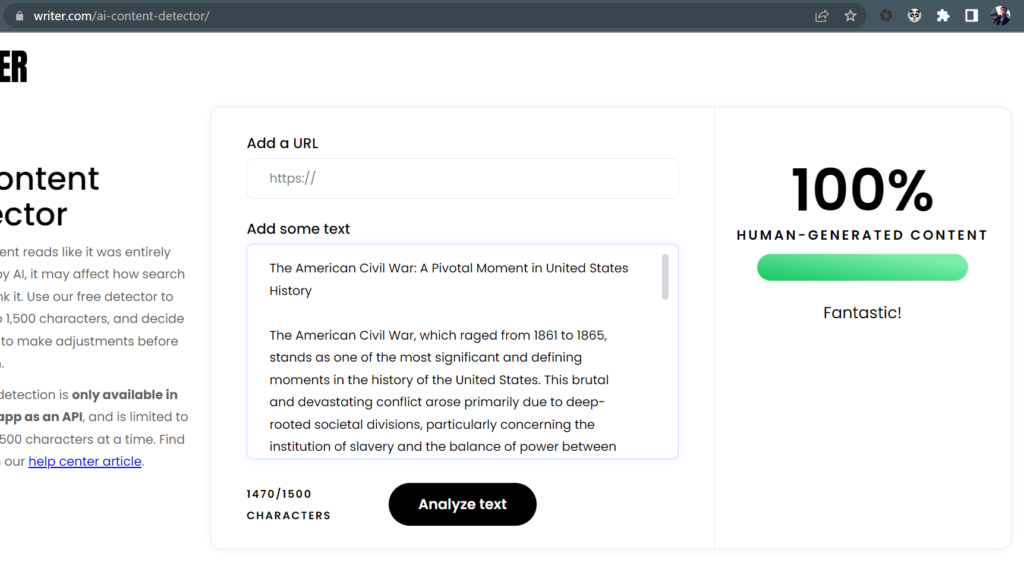
How to Get Around GPTzero?
GPTzero is one the most accurate AI detection tools out there for content created by ChatGPT. And to be honest it scrutinizes human written content as well. Better is you the multiple method together. Give an outline, a complex prompt, give sample paper and humanize it afterwards. If you do all these methods, the result will be more than 80% and passing AI detection.
Despite advancements, AI-generated content may still have limitations, particularly in terms of generating highly creative or deeply insightful pieces. Understanding these limitations can help in augmenting AI content with personalized touches.
Avoid Plagiarism Pitfalls
In the pursuit for creating undetectable content, it is crucial to remain within the boundaries of ethical AI use. Avoid misusing AI-generated content to plagiarize or present someone else’s work as your own.
Understanding the Boundaries of AI Assistance Be aware of the intended purpose of AI tools like ChatGPT. Using AI to brainstorm ideas or gain inspiration is legitimate, but submitting AI-generated content without proper attribution is unethical and a violation of academic integrity.
Cite Sources and Giving Proper Attribution If you include AI-generated content in your work, always give proper credit to the AI tool and its source. Additionally, cite any external sources used in the content to avoid plagiarism.
Avoiding Misuse of AI-Generated Content Never use AI-generated content to replicate or copy someone else’s work, as this undermines the principles of originality and creativity.
Conclusion
The art of evading AI detection requires a delicate balance between leveraging AI technology responsibly and maintaining academic integrity (and yes it definitely is an art). By embracing natural language variation, harnessing imperfections, and humanizing, you can create undetectable content that retains the human touch.
Remember to infuse the content with your personal insights, otherwise you will be caught by your teacher or professor even without the AI detection Tools.
Adhere to ethical guidelines, and produce authentic and valuable work that respects the principles of originality and integrity.
Before You Leave….
Check Out If your content can be detected by AI Content Detectors
What is AI Plagiarism and How To Avoid It
Does Your Content have AI Plagarism?
Check out the best AI Content Detection Tools that you can use right now

